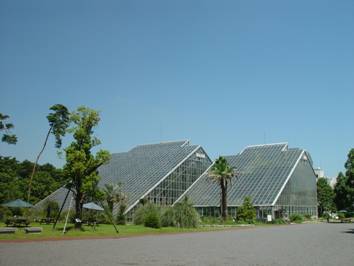
Tsukuba Botanical Garden
The Tsukuba Botanical Garden, as the home of numerous living organisms, conducts research to gain a better understanding of plant diversity. At the same time, action is being taken to raise public awareness regarding the importance of preserving plant diversity by supporting the holding of exhibitions, seminars, and workshops, and through efforts to collect and preserve endangered plant species.
Over 7,000 species of wild plants have been planted over an area of approximately 14 hectares, of which about 3,000 species are on permanent display both outdoor and in greenhouses. The outdoor area is divided into nine zones where plant species indigenous to Japan abound, including a forest zone with evergreen broad-leaved trees, coniferous trees, and deciduous trees; an upland grassland zone; a rocky zone; a sand-gravel zone; and an aquatic zone. Plants that are not native to Japan can be seen in the greenhouse area which is divided into four zones that emulate tropical and semi-arid regions—the savannah zone; the tropical forest zone; the tropical rainforest zone; and the tropical aquatic zone.
The Tsukuba Botanical Garden holds events through the year to communicate to the public the benefits of preserving plants, such as an exhibition on endangered plant species, an orchid exhibition, and seminars to report on the latest developments in plant research. The newsletter published every week by the Garden provides information on the best places to enjoy seasonal plants.
Over 7,000 species of wild plants have been planted over an area of approximately 14 hectares, of which about 3,000 species are on permanent display both outdoor and in greenhouses. The outdoor area is divided into nine zones where plant species indigenous to Japan abound, including a forest zone with evergreen broad-leaved trees, coniferous trees, and deciduous trees; an upland grassland zone; a rocky zone; a sand-gravel zone; and an aquatic zone. Plants that are not native to Japan can be seen in the greenhouse area which is divided into four zones that emulate tropical and semi-arid regions—the savannah zone; the tropical forest zone; the tropical rainforest zone; and the tropical aquatic zone.
The Tsukuba Botanical Garden holds events through the year to communicate to the public the benefits of preserving plants, such as an exhibition on endangered plant species, an orchid exhibition, and seminars to report on the latest developments in plant research. The newsletter published every week by the Garden provides information on the best places to enjoy seasonal plants.
Tsukuba Botanical Garden
Website: http://www.tbg.kahaku.go.jp/english/
